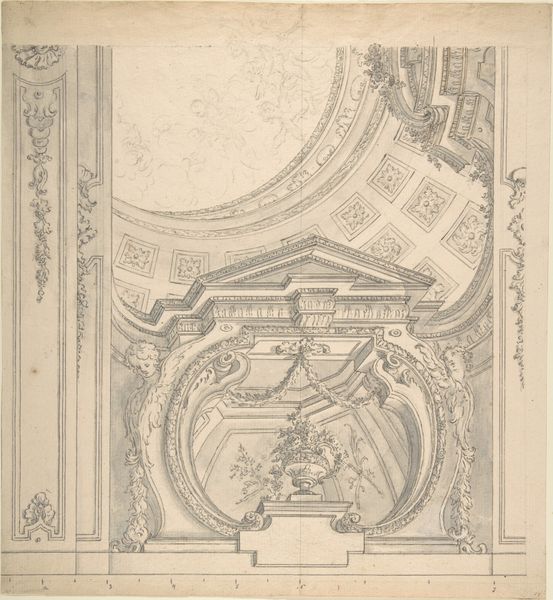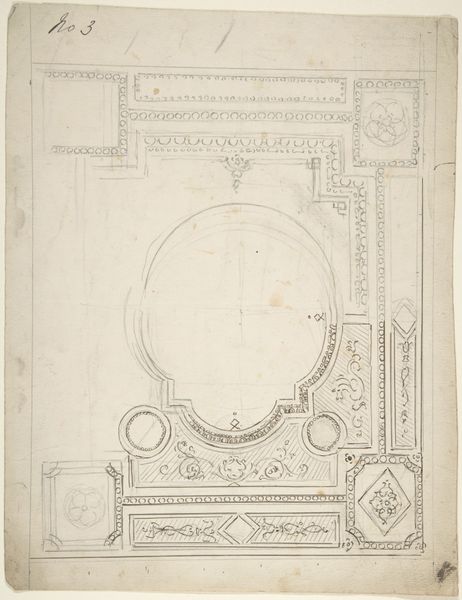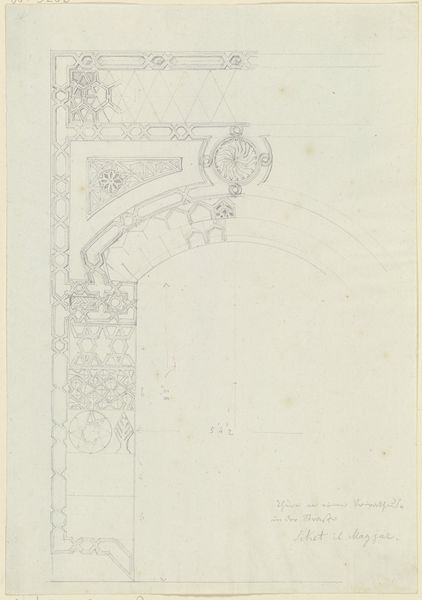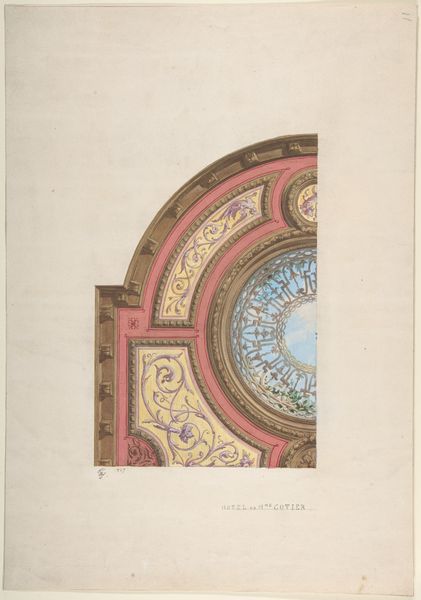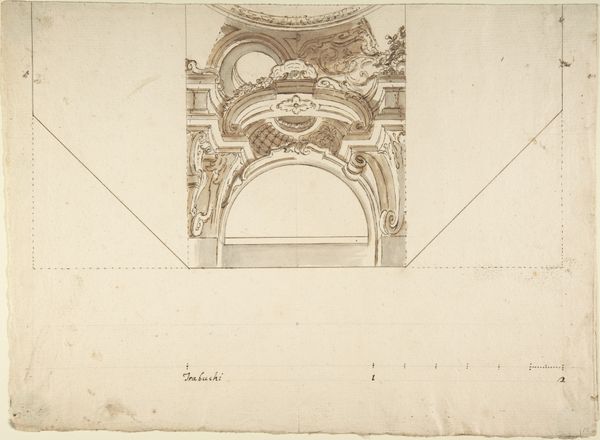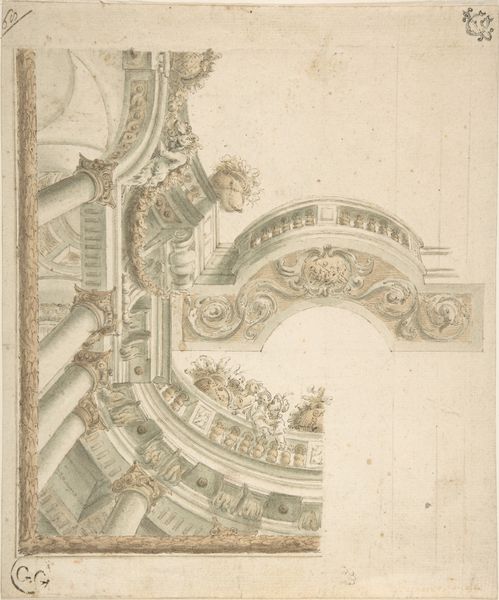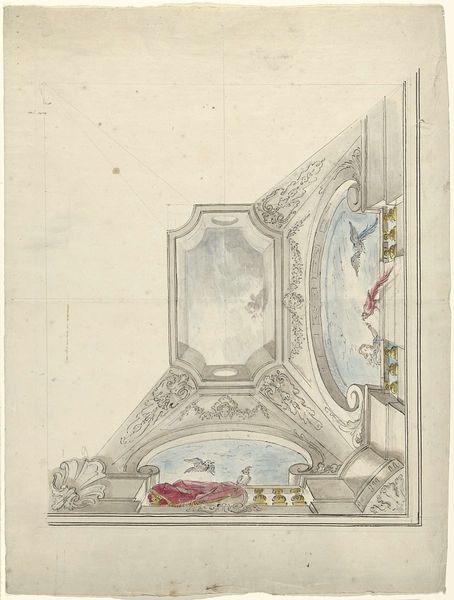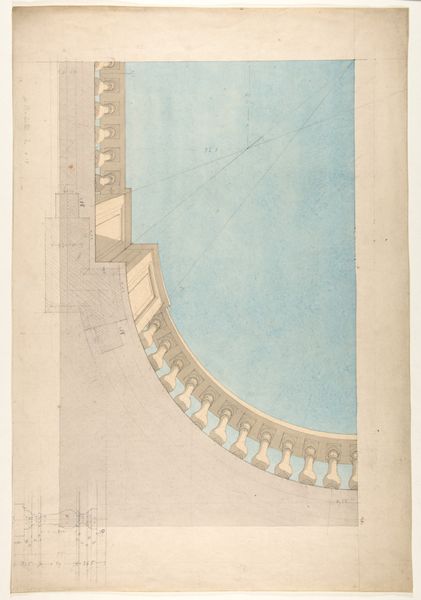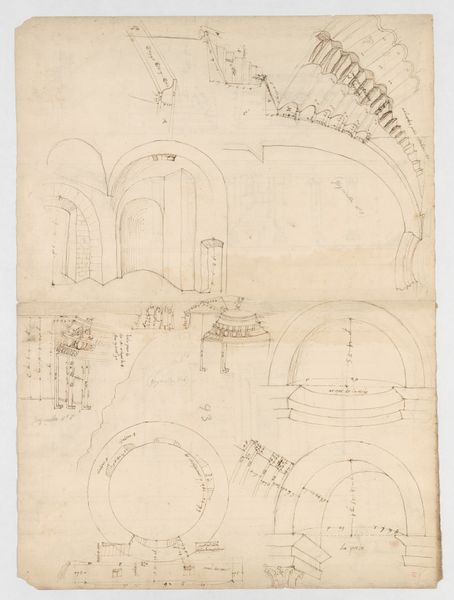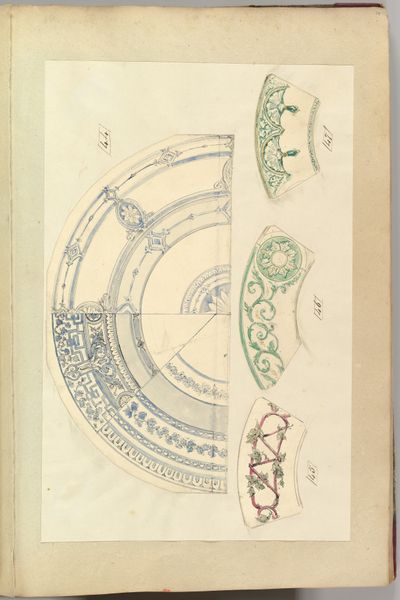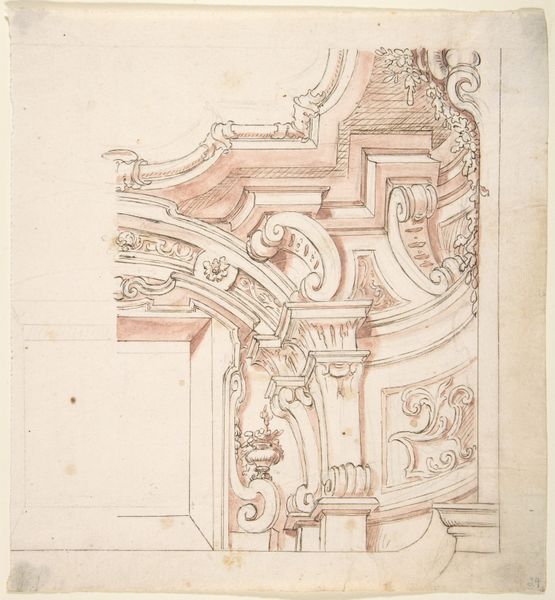
drawing, print, watercolor, architecture
#
drawing
#
neoclacissism
# print
#
form
#
watercolor
#
geometric
#
classicism
#
line
#
cityscape
#
watercolor
#
architecture
Dimensions: 4 7/16 x 20 1/2 in. (36.7 x 52 cm)
Copyright: Public Domain
Curator: Here we have Leonardo Marini's "Design for Ceiling," estimated to be created sometime between 1725 and 1805. It's a drawing combining print and watercolor and now resides here at the Metropolitan Museum. The scale feels enormous. Editor: My initial impression is one of ordered grandeur—almost clinical. It reminds me of anatomical drawings in its precise execution. What’s the emotional residue you sense, looking at these fragments? Curator: I'm drawn to the way Marini presents a blueprint, yet includes flourishing ornamental detail. Note how the geometric forms—the arches and circle—act as containers for cultural expression, specifically Classicism. The symmetry is grounding, while the classical motifs stir something like longing for historical continuity. Editor: Yes, and how meticulously the ornamental elements are delineated within this framework! The artist plays with positive and negative space to generate a compelling visual rhythm. It feels calculated and considered, aiming for that coveted timelessness associated with Neoclassicism. It’s cool, collected... aloof, almost. Curator: This 'aloofness,' as you call it, echoes the Enlightenment era's focus on reason, doesn't it? The visual language suggests a conscious connection to idealized past societies. Ornamentation isn't mere decoration but is coded communication, reaffirming values like civic virtue, rational thought, and artistic excellence. Editor: Agreed. Each line contributes to a delicate structure—I see an exercise in visual rhetoric that reinforces order through geometric perfection. It speaks of intent—planning and a mastery over artistic execution that mirrors control and power. What strikes me is not the evocation of the past, but of power—the power needed to command the past into presence through symbolic deployment. Curator: Indeed. Examining this “Design for Ceiling,” I observe both personal creative expression through watercolor and a reach toward shared cultural roots, revealed in the consistent neoclassical symbolic language. Editor: Analyzing its form, technique, and composition helps me discern the ideologies embedded within Marini's elegant structure and reveals much about the time period and prevailing intellectual values that were held in such high regard.
Comments
No comments
Be the first to comment and join the conversation on the ultimate creative platform.

